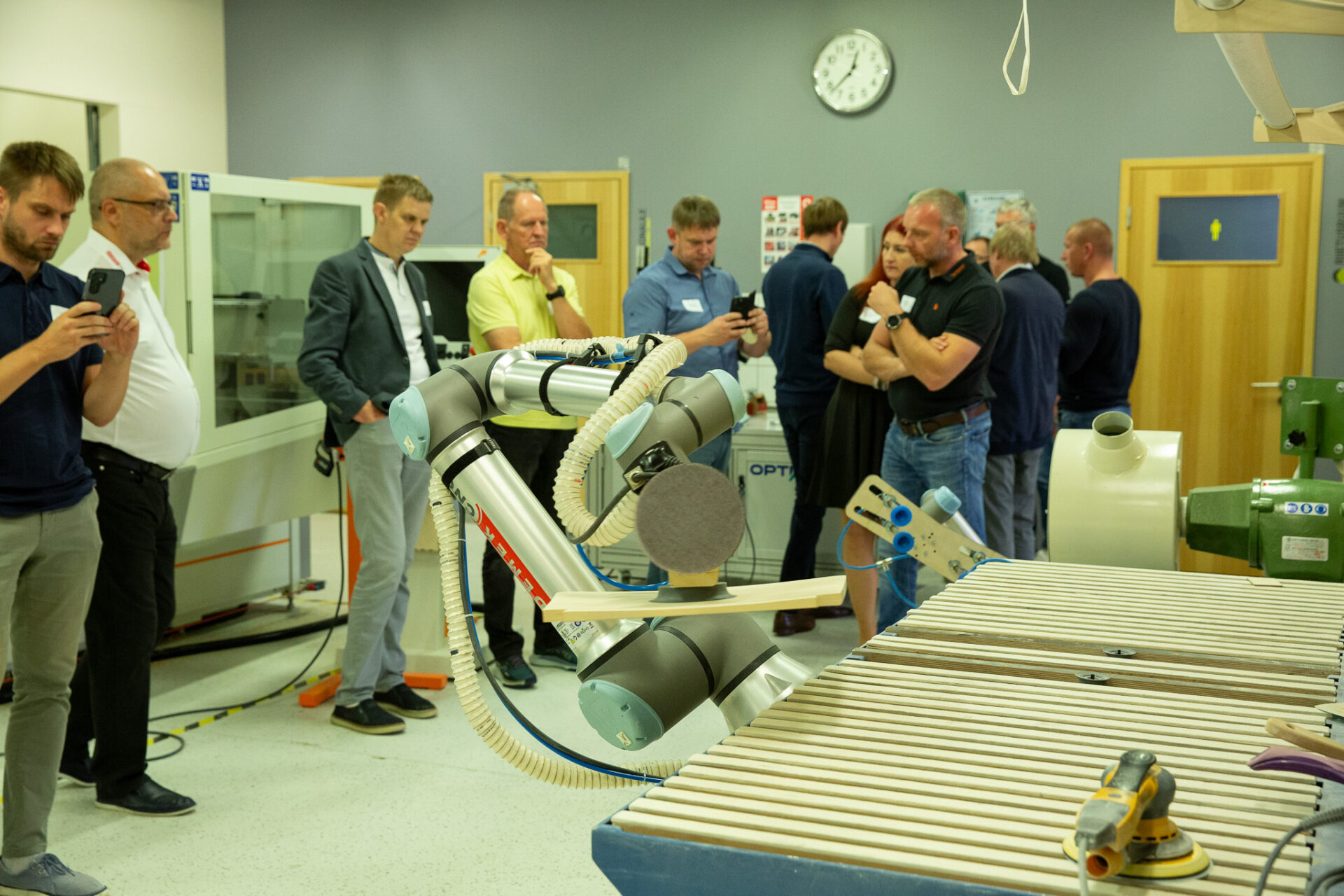Wage Pressure and Labor Shortages Create Significant Costs for Manufacturing Companies
Wage pressure and labor shortages create significant costs for manufacturing companies, which consumers are unwilling to cover. Therefore, companies must significantly improve their production efficiency. The first step is to review work organization and eliminate various wastes, but at some point, this is not enough.
The next step is to change work organization through automation and robotization. However, this seems like a big bite to chew for many. It is believed that it is expensive and complicated or that the production is too small for it. The robotics seminar held at the Wood Competence Center TSENTER debunked myths and showed that these claims might not be true.
At the seminar, VIDRIK (Virumaa Digital and Green Technologies Innovation Center) provided an overview of the current state and future of the robotics world, AIRE (AI & Robotics Estonia) introduced funding opportunities and services, and Industrial Robotics Company from Lithuania demonstrated automation solutions. Invar Naams from Robomente OY talked about activities before acquiring an industrial robot and implementing the robot in production.
According to the seminar participants, the program was comprehensive and offered something for everyone, but the demo area received the most praise. TSENTER hosted 13 collaborative robots performing various everyday furniture industry tasks – sanding, drilling, finishing, assembling, etc. Even a welding robot from OMD OÜ was present.
The seminar differed from a typical robot demo in that the robots were allowed to perform tasks that manufacturers have to do every day. The main goal was to show that it is possible to change work processes with relatively simple means and relatively low investment. One of the most affordable collaborative robots on display was the IGUS, costing less than 5,000 euros, which serviced a laser cutting machine without human intervention.
One of the larger robots was the UR20 from Demek CNC, which serviced a brushing machine by placing and removing parts, leaving the human task to start the program and change the bases.
A KUKA collaborative robot from Alas-Kuul fed parts into a flat sanding machine. The advantage of this solution over a human is a consistent work speed and maximum use of sanding paper, as the robot always uses the entire belt to its maximum extent.
Many visitors were also interested in the small UR3 servicing a drilling machine, which had gained a seventh axis to increase its reach. The robot started the drilling cycle itself and was self-sufficient as long as parts were provided. Yes, such a robot is certainly slower than a human doing the same job, but it never took a break and was willing to work longer shifts without protest.
Additionally, two UR robots sanded parts of different shapes, one holding the part and the other the MIRKA sander. Both managed to work independently excellently.
An Estonian-developed screwdriver solution from Optimo Robotics offered the opportunity to solve a real assembly bottleneck for a partner.
Teamster Drive Systems made the first presentation of the Kassow Robots collaborative robot now available in Estonia and introduced various vacuum grippers for robots.
VIDRIK and the University of Tartu demonstrated their solutions for programming part recognition. The Estonian University of Life Sciences allowed people to try for themselves how easy or difficult it is to create a program for a robot.
“Talking to the seminar visitors, it seemed that many of them now have a new perspective on robot solutions, and maybe we managed to alleviate their fears of trying them out. And perhaps they will dare to join our manufacturing solutions program, which supports the testing of such robotization activities,” said TSENTER development specialist Erkki Naaris.
Read more about the manufacturing solutions program here.
Slide presentations from the seminar (in Estonian):
- Introduction of VIDRIK, Heiko Põdersalu, VIDRIK
- “Current State and Future of Robotics” Sergei Pavlov, VIDRIK
- Introduction of TSENTER, Ants-Hindrek Tiido, TSENTER
- “What activities are important before acquiring an industrial robot and what should be considered when implementing the robot?” Invar Naams, Robomente OY
- “How to Raise Funds and Increase the Competitiveness of an Industrial Company” Reet Pärgmäe, AIRE
- “Overview of the Feasibility Consulting Service for Robotization” Tõnu Lelumees, AIRE
- “Robotic solutions for furniture production” Ugnius Gediminas Vygėlis, Industrial Robotics Company


